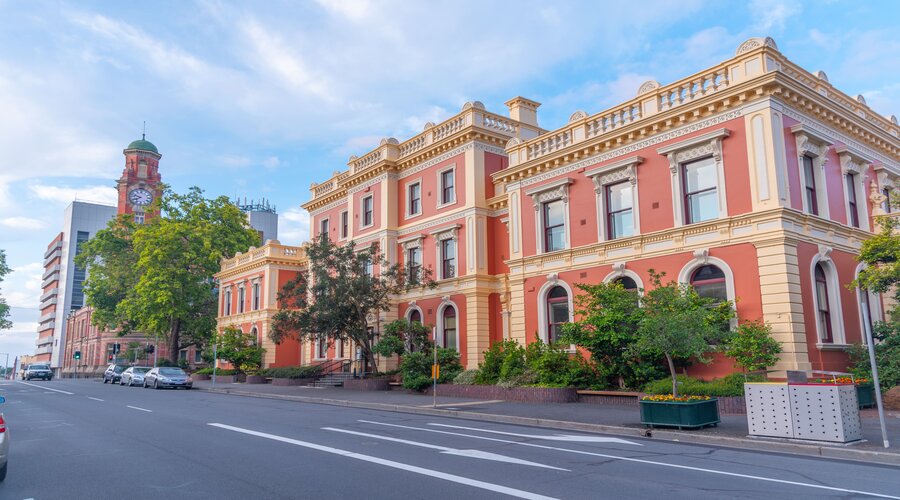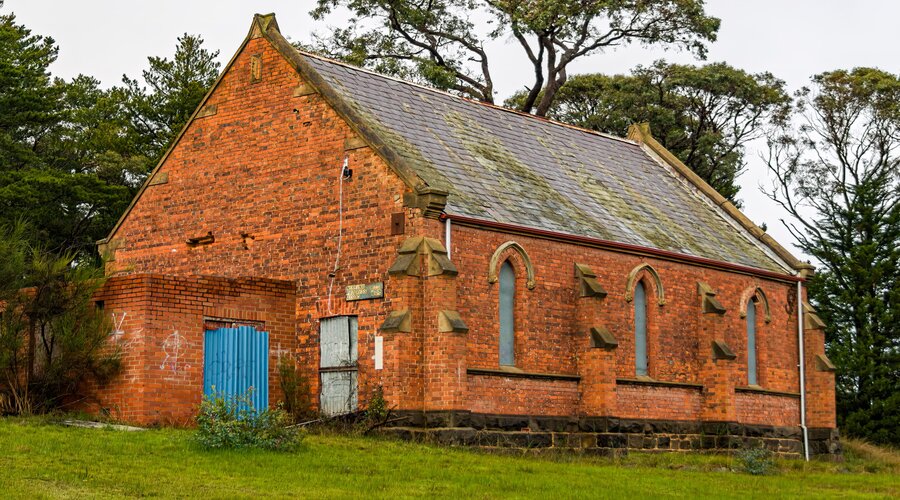Do's and Don'ts of Renovating Heritage Properties

A heritage site, whether historical landmarks, natural woodland, or landscape, is what we have inherited from the past, cherished and preserved in the present, and passed on to the future.
In a broader sense, heritage is the foundation of a culture that plays a vital role in our society, norms, customs, political views, business, and worldview. By helping us shape our identities, our heritage is part of who we are. This expression of our identity shows others what we value; it highlights our customs, traditions , and priorities.
However, renovating a listed heritage property can be fraught with problems and obstacles. But with some homework and research, you can make the process much smoother and complete your project faster. If you are planning a heritage restoration and renovation project, our list of Do's and Don'ts may help you with the step-by-step process a bit further - let's get started.
Heritage assets: An overview
Simply put, a heritage property has historical, aesthetic, or social features considered worthy of preservation for future generations. For example, while some consider grand buildings from 19th-century properties as heritage sites, houses or sites from the 1970s or even later can also be regarded as having significant heritage value.
Heritage-listed sites are an essential link to a country's history. Heritage sites, especially houses, are residential properties that the government, usually at the municipal level, designates as a "special heritage interest". Its unique, distinguishable architectural features and characters make a heritage property different from an old building.
Heritage assets can include built resources such as historic homes or bridges or heritage reserves and cultural heritage landscapes. Heritage also includes archaeological resources.
Types of heritage properties
Heritage properties or sites can be classified into four types based on their heritage value. Here's the breakdown.
Buildings:
A heritage building is a human construction designed to be inhabited by humans. The primary heritage value of buildings is architectural and cultural, but they can also be highly illustrative through their historical significance. Examples include houses, churches, town halls, barns, offices, theatres, leisure centres, schools, hospitals, warehouses, factories, banks, shops, courts, lighthouses, pumping stations, and police stations.
Structures:
Heritage structures are artificial constructions, not structures that are not generally used for habitation. This form of heritage property possesses different forms of architectural, aesthetic, or illustrative historical value. Examples include bridges, statues, tombstones, war memorials, telephone booths, bollards and beacons, shipwrecks, chimneys, lampposts, public art, follies, fountains, viaducts, water fountains, and bus stands.
Gardens and designed landscapes:
The heritage gardens and landscapes are natural sites that have been consciously crafted for artistic purposes. These may include models of structures or plantings, lakes, waterfalls, elevated roads or walkways, and artificial terrain. Examples include public parks, private gardens, cemeteries, burial grounds, seaside promenades or city walks, botanical gardens, memorial gardens, and golf fields.
Sites and places:
This type of heritage site may include links to legends, folklore, myths, or works of fiction but has a geographical extent that can be identified on a map. This may consist of archaeological features that incorporate the remains of previous interventions into the landscape. These sites and places can take many forms, but their primary value will generally be a community, archaeology, or historical affiliation.
The Do's of Listed Property Renovation

Do consult with the local council
There is no straightforward way to determine whether a building is heritage. As we discussed earlier, most people think of heritage buildings; they immediately think of "old", which is hardly the case. Recent buildings such as the 70s, 80s, and '90s may have historical value and could be considered heritage.
In larger cities, infrastructure can support a "Heritage" department that seeks to find and protect properties that still hold some historical value. Small towns may require their city councils to implement various property protection laws. Generally, the estate society or board is supposed to carry out an appraisal of a property. So, make sure you get the building assessed by the local council and follow the local guidelines and restrictions.
Restrictions may include traditional finishes, a limited palette, and repair rather than replacement where possible. In South Australia, the Planning, Development and Infrastructure Act 2016 requires that most 'developments' be approved by the relevant planning authority. You may also need to write a Heritage Impact Assessment and Management Plan that outlines how the renovation will affect or enhance the heritage status of the home.
Do prepare a cost estimation
The cost of a heritage building renovation can be quite expensive, not to mention challenging to predict accurately in advance. Changes in material costs, labour rates, and even weather conditions can all play a huge role in the final price of a heritage renovation project. How effectively you communicate your wants and needs to the people designing and building your home can also impact the total cost.
If you're in the early stages of design and planning, the most you can get is a rough assessment, but it can still be worth a try. After you have the final construction documents and work with a builder or renovator, estimates can become more accurate. A reputable and experienced painting company can help you with a detailed cost estimate before committing to the project and provide you with up-to-date information on costs during the various stages of the construction process.
Do hire a professional team
Renovating heritage-listed homes can be very rewarding, but restoring original features can take a lot of time and care and finding an artisan with the right skills.
In addition to hiring Dulux Accredited Painters to renovate the property, you may also need professionals with experience in historic preservation. For example, a local historian and contractor experienced in restoring heritage buildings can help explain the restoration process and the amount of work involved.
You also need to ensure that your team understands your goal for property recovery. So it is essential to work with a professional painting company with experience in heritage property construction and restoration similar to your project.
Choosing a professional builder with expertise in heritage reclamation means they have knowledge and years of experience in this particular field. They are used to following official guidelines and guarantees to protect your investment.
Do review the heritage conservation plan with experts
Design and renovation in heritage neighbourhoods are all about context. To develop an appropriate response, you need to analyse and understand the forms, materials, and development plans that characterise a neighbourhood.
Every small detail in a heritage building matters- starting from the chimney to the fence, especially where the building can be seen from the street or public area. Your proposal will be judged on how well it reflects your community, so it will be helpful to work with professionals experienced in this type of work.
Many boards hold pre-application meetings so that you can discuss the specifications of the project while it is still in the early design stages. To get the most out of the meeting, determine which consulting service you should talk to. For example, with a legacy agent, you may need to discuss your proposal with development engineers, planners, and others.
Read More: How to Renovate a Heritage Home
The Don'ts of Listed Property Renovation

Don't forget to start the heritage building permit application quickly
A restoration project is not to be taken lightly. Take the time to review and evaluate the design before submitting your application, as changes to an agreed plan can be costly in both time and money. Use the early stages of the design process to explore options and arrange your resources- this will make the project run more smoothly in the long run.
Some buildings are covered with layers of old renovations from different eras and periods. So start with your local council, local library, or historical society and research your property's historical background and significance. This tells you when to do each council-approved renovation and who designed them.
Don't forget to preserve the architectural details
The whole point of heritage-listing a property is to preserve its character, so removing or replacing some of its most attractive features, whether or not you're allowed to, would be distortion in the name of restoration.
A heritage property's facade and entryway details, such as arches, ceiling roses, and fireplaces, are all treasures worth keeping as they often reveal your home's rich history.
With the help of a heritage conservation expert, identify the key architectural details. Make sure not to remove or modify original architectural elements such as doors, decorative stones, fireplaces, or windows. They are often an integral part of the listed status of buildings.
Don't make modern upgrades that don't enhance heritage features
While it's advisable to return old parts of your home to their former glory, that doesn't mean you have to build an extension in the exact style of your original home. Unfortunately, it isn't easy to reproduce old design techniques.
But for starters, you must ensure you are not adding too many contemporary elements to improve the property's current condition. If the old designs collide with the new, the property may lose its value significantly.
Although it is difficult to find identical materials, several companies specialising in heritage restoration and renovation can help you. For example, if you need to replace exterior posts, you can ask a cabinetmaker who specialises in heritage sites to replicate those using traditional techniques.
Don't forget the thermal performance properties
Restoring heritage buildings is critical for preserving a country's historical heritage. In addition, research has demonstrated that renovating listed buildings to current energy efficiency and thermal comfort standards is key to improving sustainability and energy efficiency and maintaining heritage-listed sites.
In most cases, these parameters are ignored during the renovation process, even when there are plans to change the capacity of buildings.
Therefore, you should consider improving the building's overall thermal performance and energy-saving opportunities when designing the renovation.
Final words
A local heritage renovation project is more than just preserving and protecting artifacts from the past. Renovation projects like this should value local heritage and have the potential to revive abandoned or less popular localities and provide opportunities for people to revisit, re-engage and reinterpret their heritage.
So again, be sure to work with trusted artisans who know the heritage requirements and the importance of uniqueness in your home.









